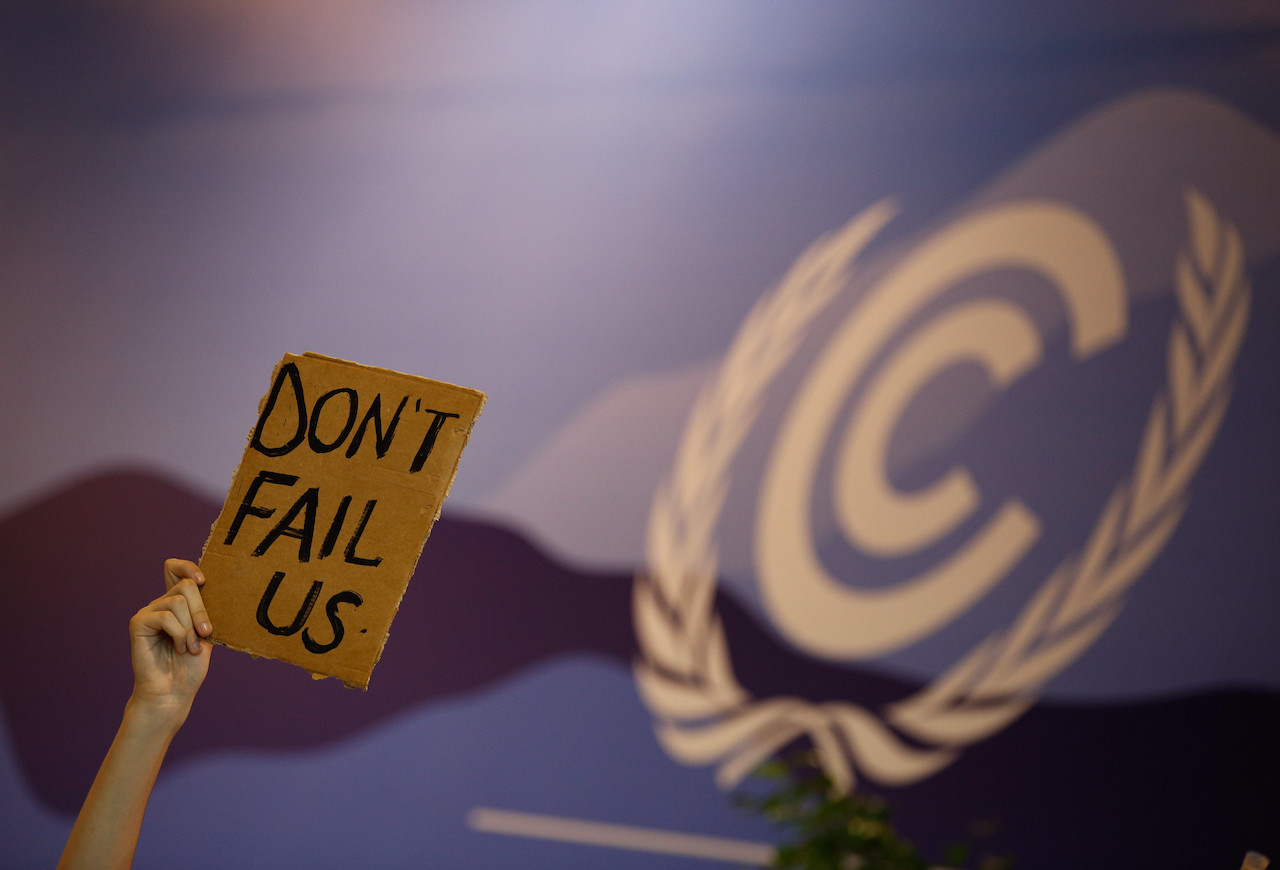COP27 produced a pledge to set up a fund to mitigate climate impacts in the hardest hit low-income countries, but little progress was made on speeding up the energy transition.

Fractious COP27 climate talks in the Egyptian resort of Sharm el-Sheikh produced a last-minute agreement, the highlight of which was a pledge to create a “loss and damage” fund, largely financed by wealthy nations, to ameliorate the impact of climate change on developing countries.
But there was little to celebrate for those in the impact investment community looking for firmer commitments to phasing out fossil fuels and greater support for investment in the energy transition.
In that respect, the final text, agreed in the early hours of November 20, did little to move on from what was agreed at COP26 in Glasgow in 2021, merely reiterating the call made then to accelerate the “phasedown” of unabated coal power and phase-out inefficient fossil fuel subsidies, rather than providing a timetable for phasing out fossil fuel use.
“The UN climate talks ended with an attempt at solving for the symptoms of climate change, not the causes,” according to Annika Brouwer, sustainability specialist at emerging markets-focused investment manager Ninety One.
Compromise
She said the final agreement represented a compromise between the desire of the developed world to see greater mitigation ambition and expand the list of who is responsible for paying for climate action on one hand, and the developing world’s demands for recognition and support in the face of escalating climate impacts on the other.
“This means the deployment of transition finance could not be more urgent. If policy weakens, we must rely on other levers for change to drive the outcomes that science recommends,” she said.
A loss and damage fund could prove a useful spur to wider investment, but details of how it would work, who would contribute what to it, and even which countries would benefit have yet to be established.

“The commitment to a loss and damage fund is obviously welcome, but now we need to see what that means in terms of more capital flowing to the countries that need it most to fight climate change,” Sarah Gordon, CEO of the UK-based Impact Investing Institute, told Impact Investor.
COP27 did at least provide a backdrop for financial institutions to assess progress in bolstering climate-impact and energy transition-related investment via a series of reports and surveys published to coincide with the event. A summary of their findings would be that, while advances have been made, the sector has plenty more to do in terms of financial commitment, transparency and adopting a more pro-active view of the problems to be tackled.
The World Benchmarking Alliance (WBA), a financial sector stakeholder group, reports that only 20% of financial institutions publicly report on their impact on people and the planet – reporting that is required if processes to identify and manage impact are to be put in place.
It also found that fewer than 40% of financial institutions have disclosed long-term net-zero targets, only 2% currently disclose their financing to low-income countries, and fewer than 5% acknowledge they have a process in place to identify the impact of their financing activities on nature. The WBA has launched a financial system benchmark covering 400 asset owners, banks, asset managers and insurers, which it hopes will spur action.
Financial institutions also risk coming up short in terms of investment in companies and firms facilitating the energy transition in low-income countries – vital if global warming is to be restricted, while also mitigating the social and environmental impacts of winding down labour-intensive industries such as coal mining.
Low investment levels
Daisy Streatfeild, Ninety One’s sustainability director, said that by focusing on avoiding or scaling back investments in entities associated with heavy carbon emissions in order to meet ESG targets, financial institutions risked depriving those that most need support of the funding needed to clean up their businesses in a just transition.
Only 16% of asset owners surveyed by Ninety One for a report on funding the energy transition said their funds were investing in transition-finance assets in emerging markets, although 86% of that group said further investment in transition finance was a priority for them.

Streatfeild said that while that number was much smaller than it needed to be, commitment seemed to be growing. Around half of survey respondents said they believed transition finance was a major commercial opportunity for asset owners, while 60% thought transition finance would grow rapidly over the next three years.
“This not an area that is well invested in across the board at the moment, but the results show growing interest and a recognition that this is an area where investment is going to increase. It’s also encouraging that those already invested in transition assets see this is an area where they expect to increase funding, which suggests they have found the experience positive,” Streatfeild told Impact Investor.
She said companies working to promote the energy transition also needed to make themselves as investable as possible by making sure they had credible transition plans in place.
“It’s really key to push companies to have those plans and engage with them to help them acquire the technical capacity to carry them out. If they do that, then the money should be there to invest in them. That’s the challenge,” she said.
“Signs of practical developments”
The Impact Investing Institute’s Sarah Gordon also believes the industry is travelling in the right direction, aided by the focus given to the role of the private sector in funding climate initiatives at COP26 in Glasgow.
“There are big failures and gaps, particularly around capital commitments to the developing world, but there are also signs of really practical developments in important areas. Back in 2021, no bank had adopted a science-based 2030 or 2050 target for their Scope Three emissions. Now, 150 GFANZ members do have them, and not only do they have the targets, but they have to report against them, so there is transparency,” she said.
GFANZ – the Glasgow Financial Alliance for Net Zero – is the showcase financial sector climate investment initiative led by former Bank of England governor Mark Carney, launched in the run up to the COP26 conference. The alliance, which accounts for assets of around $153 trillion, recently caused waves by dropping a requirement for its members to sign up to a United Nations emissions reductions campaign.
GFANZ said member alliances would now be encouraged, but not required, to partner with the UN’s Race to Zero. The move is believed to be a response to conflicts between the organization and some US financial institutions over the pace of at which climate change measures should be implemented.
“GFANZ isn’t perfect, but if we don’t have these collaborative coalitions, we’re not going to get to where we need to be on climate, and signs of progress should be marked,” Gordon said, noting that GFANZ had grown to over 550 members compared to 450 at the time of COP26.
Gordon called for public and private investors to work together more closely. “Whether it’s new instruments, approaches and partnerships, or blended finance structures, there has to be mobilisation of both public and private sector capital,” she said.
Earlier this year, the Impact Investing Institute launched the Just Transition Finance Challenge, an initiative to bring more public and private capital into investments supporting a “just transition” to net zero.






